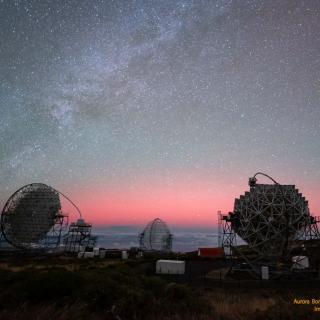It may interest you
-
 In the Museo de la Ciencia del Cosmos Boris Gänsicke will unravel the puzzle of how planetary systems will endAdvertised on
In the Museo de la Ciencia del Cosmos Boris Gänsicke will unravel the puzzle of how planetary systems will endAdvertised on -
 On January 7, 2025, the European Commission established the Cherenkov Telescope Array Observatory (CTAO) as a European Research Infrastructure Consortium (ERIC), furthering its mission to become the world’s largest and most powerful observatory for gamma-ray astronomy. The creation of the CTAO ERIC will enable the Observatory's construction to advance rapidly and provide a framework for distributing its data worldwide, significantly accelerating its progress toward scientific discovery. “The ERIC will streamline the construction and operation of the Observatory in a way that will undoubtedlyAdvertised on
On January 7, 2025, the European Commission established the Cherenkov Telescope Array Observatory (CTAO) as a European Research Infrastructure Consortium (ERIC), furthering its mission to become the world’s largest and most powerful observatory for gamma-ray astronomy. The creation of the CTAO ERIC will enable the Observatory's construction to advance rapidly and provide a framework for distributing its data worldwide, significantly accelerating its progress toward scientific discovery. “The ERIC will streamline the construction and operation of the Observatory in a way that will undoubtedlyAdvertised on -
 The Instituto de Astrofísica de Canarias (IAC) announces the death of its founding director, Professor Francisco Sánchez Martínez, whose determination led to the creation of one of Europe's leading research centres and two of the world's finest astrophysical observatories: the Teide Observatory in Tenerife and the Roque de los Muchachos Observatory in La Palma. He passed away today in Madrid, where he had been living for the last few years, at the age of 89. The director of the IAC, Valentín Martínez Pillet, emphasises that "Professor Sánchez's legacy is incalculable. He was a man who pavedAdvertised on
The Instituto de Astrofísica de Canarias (IAC) announces the death of its founding director, Professor Francisco Sánchez Martínez, whose determination led to the creation of one of Europe's leading research centres and two of the world's finest astrophysical observatories: the Teide Observatory in Tenerife and the Roque de los Muchachos Observatory in La Palma. He passed away today in Madrid, where he had been living for the last few years, at the age of 89. The director of the IAC, Valentín Martínez Pillet, emphasises that "Professor Sánchez's legacy is incalculable. He was a man who pavedAdvertised on